It's not easy to choose a coffee machine. Between those who refuse to give in to capsules, which are too expensive and too polluting, those who swear by the great vintage harvested by hand on the Bolivian plains, those who refuse to spend too much on a machine, which they nevertheless plan to use several times a day, and those who do not understand the features of the highest-end models... the options on the market are not lacking, but are often synonymous with compromise.
That's good news, the Philips Baristina aims to reconcile lazy coffee lovers like us with a strong morning espresso. The coffee machine from the household appliance giant aims to simplify the preparation of your morning espresso to the extreme, in a compact and stylish format, which doesn't compromise on quality of execution or on the bank account.
Design: compact and intuitive
At 18 cm wide and 34 cm high, the Baristina fits easily into a small kitchen. Its modern and refined design makes the most of recycled plastic. It must be admitted that while the coffee machine doesn't benefit from the gleaming chrome finishes of more high-end models, it shines with its minimalism and sobriety. The originality comes from the handle of its filter holder, available in seven distinct colors.
The water tank is located at the back, but is easy to handle, while the matte texture prevents fingerprints. The control panel, reduced to three buttons (espresso, long coffee, intensity boost), plays the simplicity card: the Baristina wants to keep it simple and efficient, even if it limits, de facto, the possibilities in terms of preparation.
The machine's strong point comes from its integrated ceramic grinder, which allows you to grind your coffee on the spot, and its semi-automatic percolation system, which gives pride of place to traditional barista gestures. When tradition meets the simplicity of everyday use, everyone is happy, especially at less than €300. Especially since compared to capsule coffee, Philips boasts two significant advantages: the ability to choose your favorite bean, without any compromise, and the promise of €300 in savings per year, according to the brand.
Really cheaper?
Capsule coffee costs Expensive, it's undeniable. At the market giant Nespresso, the capsule is sold for around 0.50 euro cents, depending on the vintage chosen. The price per kilo of whole bean coffee, meanwhile, depends on its brand and quality. While the most premium varieties compete with the price of gold, supermarkets and specialist retailers offer more affordable options, starting at 15€ per kilo.
Even if you treat yourself and opt for a vintage at 30€ per kilo, you're still winning. A cup of coffee consumes between 7 and 9 grams of coffee beans, or barely 0.20 euro cents in production cost. At three cups per day, the conclusion is clear: the budget for whole bean coffee is estimated at 220€ per year. It's much cheaper than Nespresso (€547), but more so than Senseo (€165), which offers its classic capsules starting at 15 cents, with lower extraction pressure.
Performance: it's strong coffee
The Baristina impresses with its speed of execution: preheating is almost instantaneous and extraction takes no longer than 60 seconds, an advantage for busy mornings. The ceramic grinder remains particularly quiet (around 60 dB during grinding, 50 dB during extraction), and preserves the aromas without burning the coffee.
Customization enthusiasts will be left wanting more: it was inevitable, simplicity has its drawbacks. Unlike the Philips Serie 5500 model, which offers a slew of drinks and settings, the Baristina focuses on the essentials. It's not possible to adjust the grind fineness or temperature, and the cup length programming remains basic (30 to 70 ml for espresso, 70 to 200 ml for lungo). A separate milk frother is available, but it's optional—and retails for nearly a hundred euros. It's better to stick to the traditional espresso/lungo combo, or like us, add your own options by hand.
User experience: simple, fast, fun
On a daily basis, the quality is there: the cup is dense, the temperature is just right from the first extraction, and the intensity booster allows you to obtain a more robust cup for the day after a night out. The customization of the length, although limited, is once again very simple to handle, and allows you to adapt to your preferences.
The great strength of the Baristina lies in its simplicity of handling: everything has been designed for intuitive, quick and easy use. Preparing a coffee is done in two steps, accessible to the most novice, and even to children who would like to help out: you choose your cup size (large or small), and slide the filter holder to the right. The machine automatically grinds the coffee, tamps the grounds, then extracts the drink under 16 bars of pressure. The whole thing takes less than a minute.
Maintenance: did you say chore?
Once the coffee is finished, the filter holder returns to its original position. Simply remove it and dispose of the grounds directly into your compostable waste bin. This maintenance system is particularly practical on a daily basis. Provided you give the coffee time to cool, otherwise a few drops tend to escape, cleaning is done in a few seconds, without any effort.
Another good point for the Baristina. Everything is designed to save you the chore. Daily maintenance is made easy by the grounds ejection system and the cleaning of the filter holder under water. The minimalist drip tray is easily removed and cleaned. Descaling is also effortless: when the espresso and lungo lights flash after a cup, it's time to clean the machine. Press both buttons simultaneously, and the process begins.
Price and availability
The Philips Baristina espresso machine is available on the brand's official website and at most retailers, between €299 and €314 depending on the finish chosen. A separate milk frother is available as an option (€89), and most spare parts are individually accessible in case of breakage.

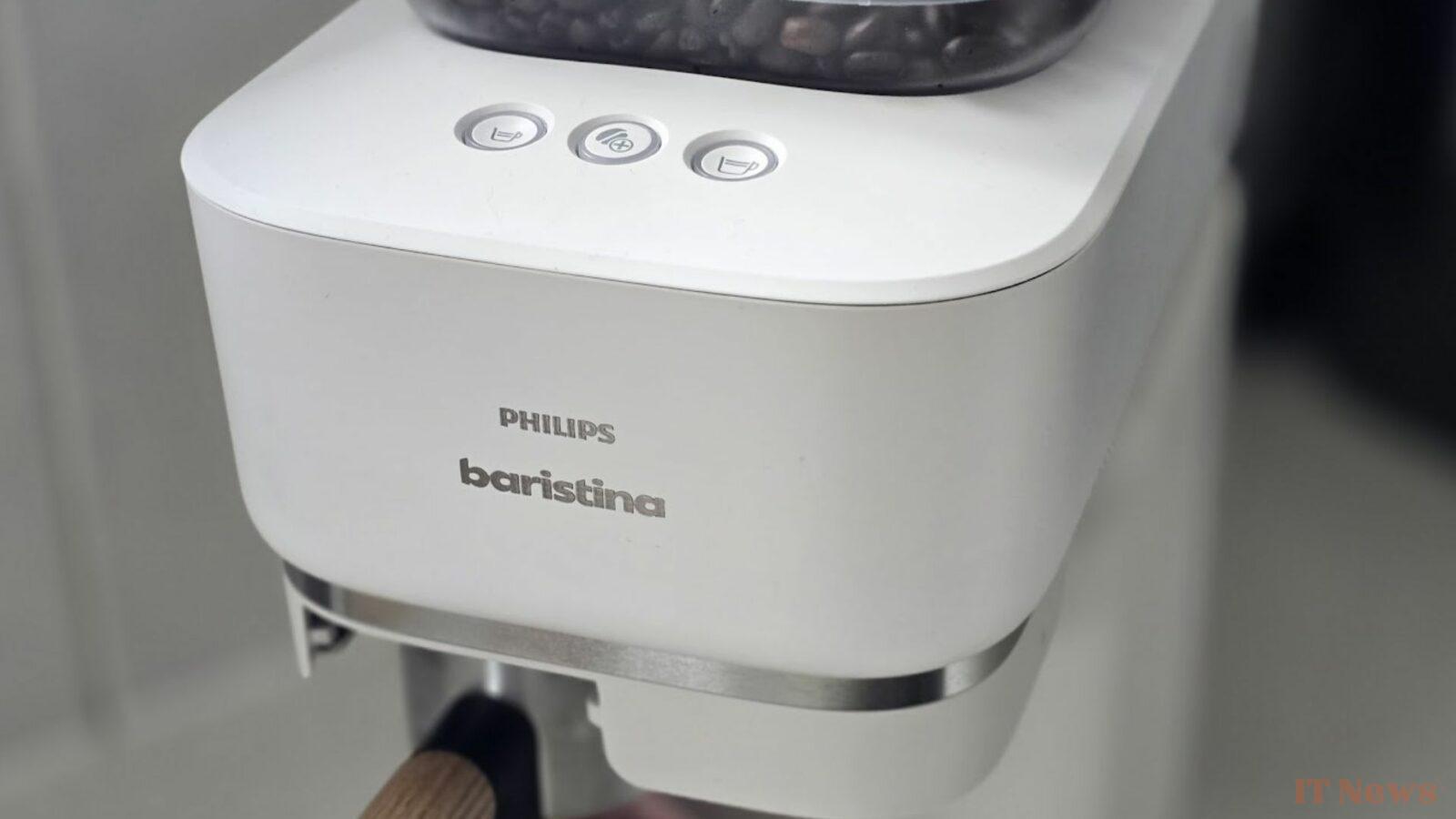
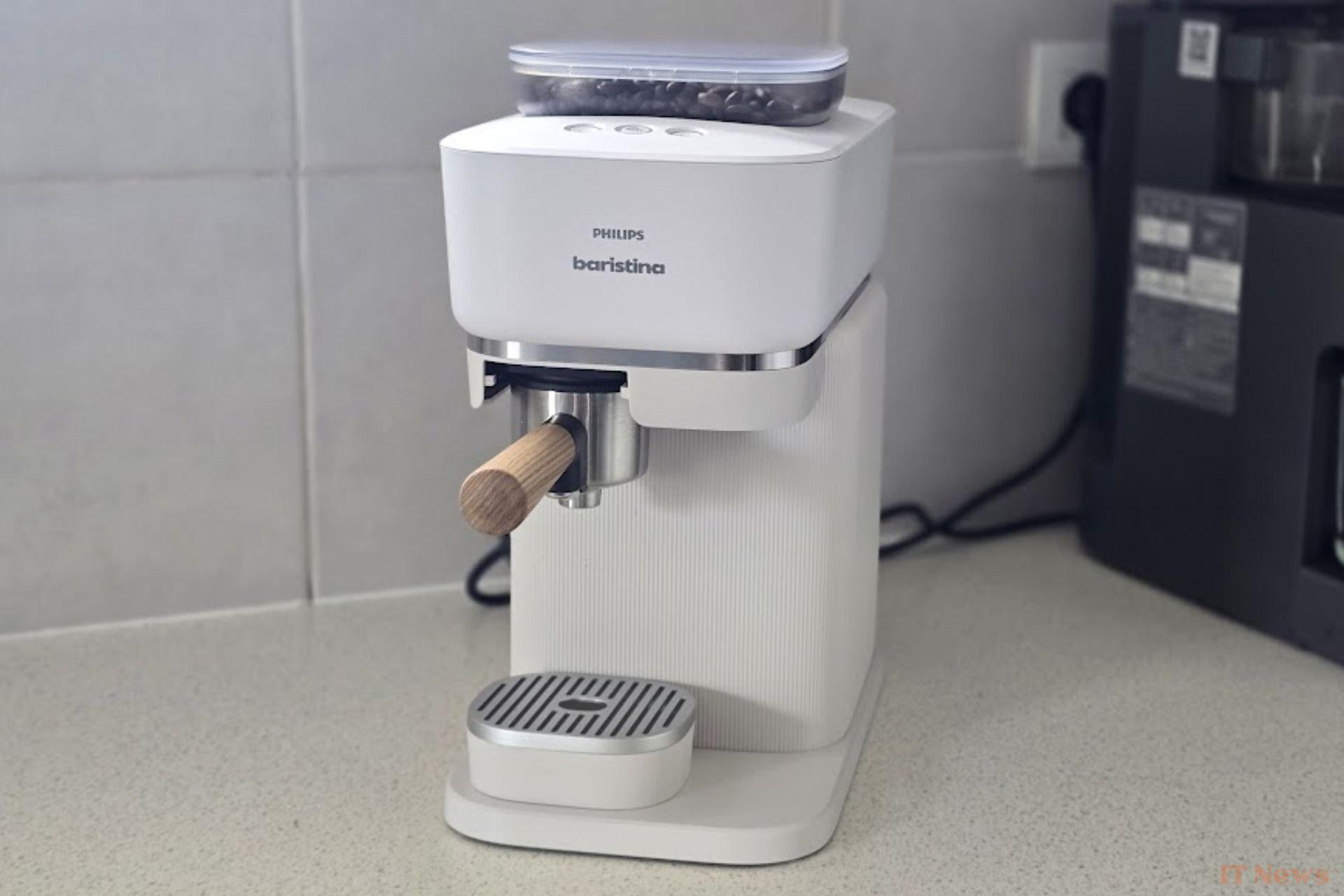
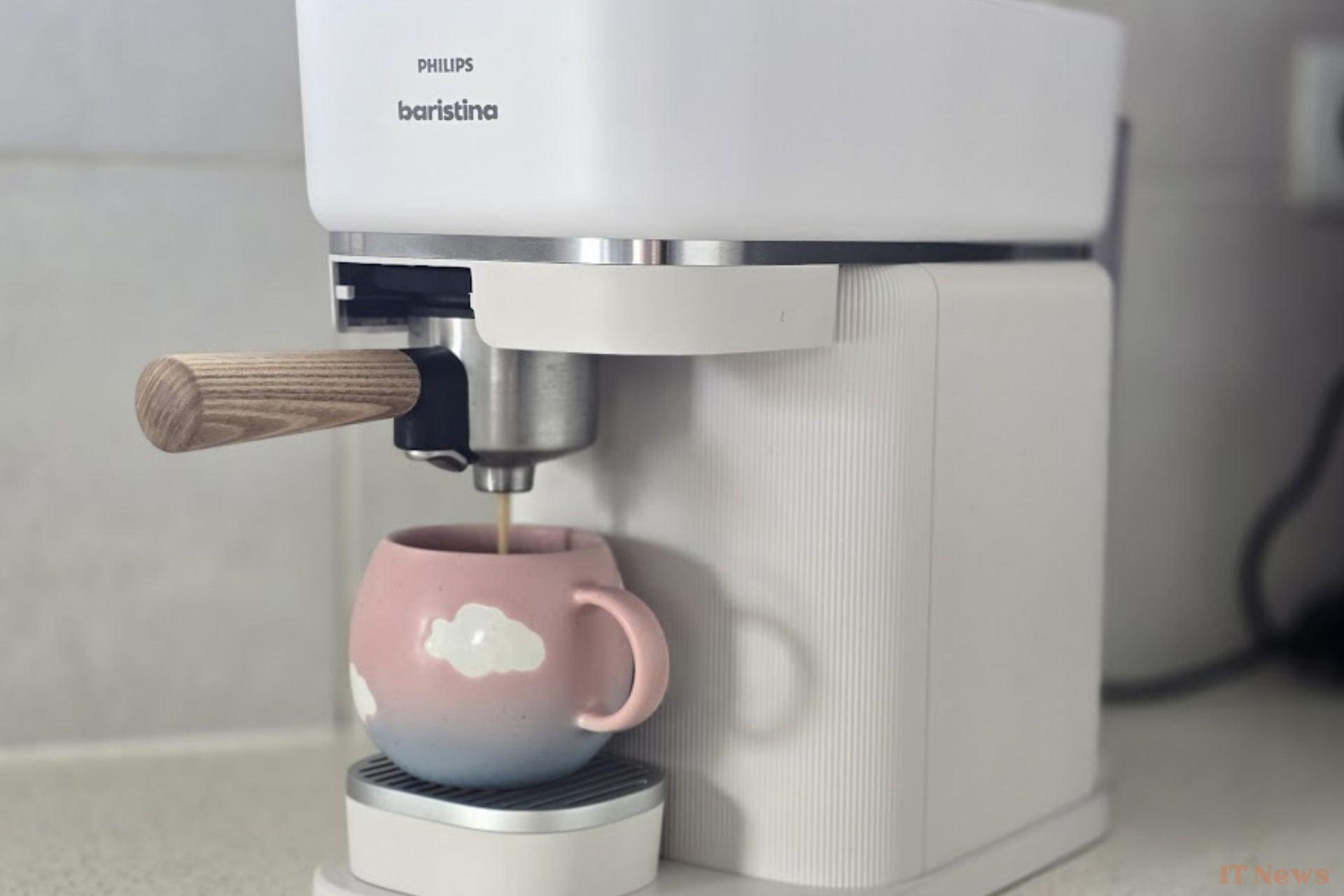
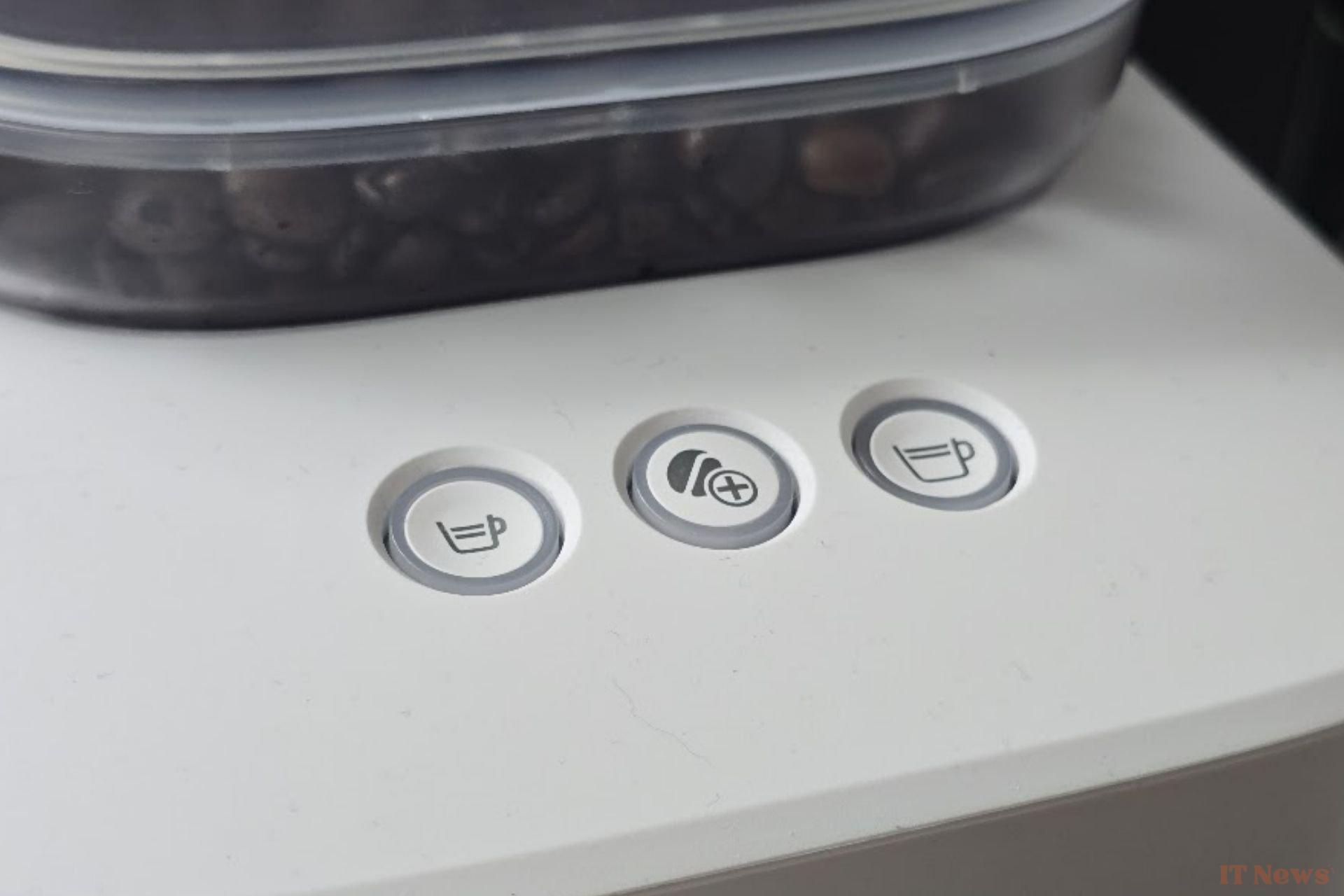
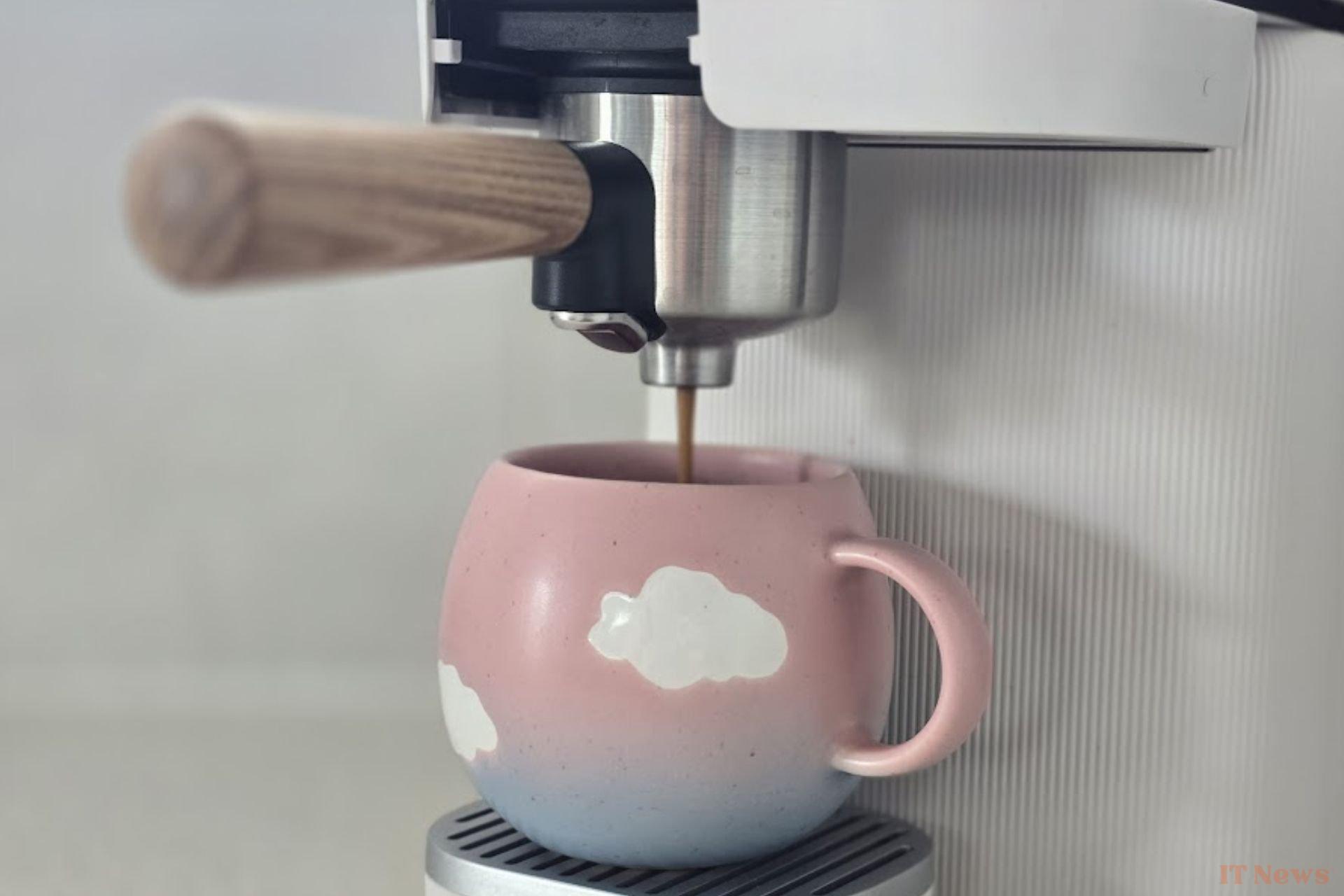

0 Comments